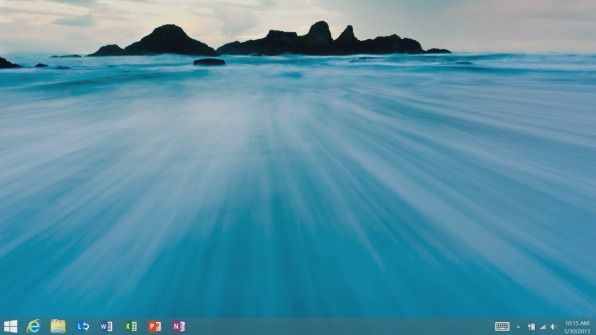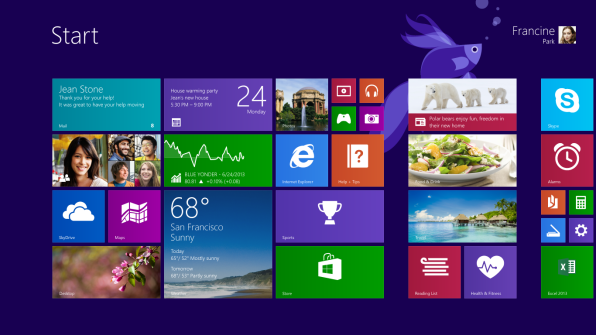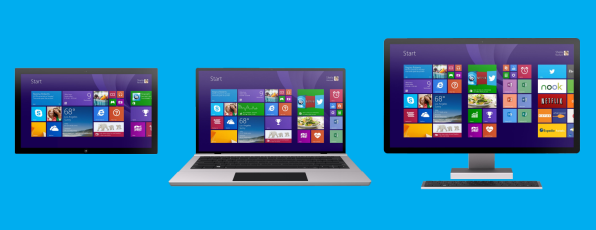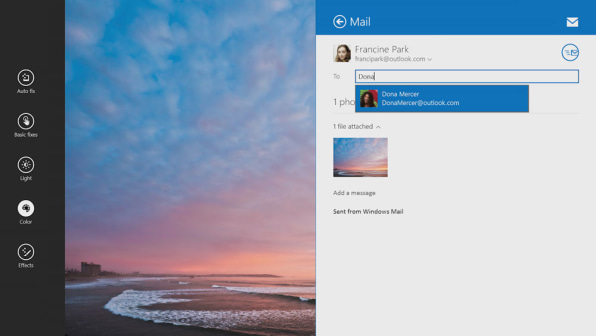How to Install Chromium Os on Windows 10
With Windows 8, Microsoft did the unthinkable: The company designed a groundbreaking interface of boxes called Metro that could scale from laptops, to tablets, to phones, to Xboxes–meaning any Microsoft device in any context would always be equally familiar. Not even Apple has been bold enough to merge Mac OS and iOS, which is why it seemed that with Windows 8, the nerds at Microsoft had somehow won the design war.
But the Metro interface hasn't brought a new golden age for Microsoft. Adoption of Windows 8 PCs has been slow, while Microsoft's Surface tablets have proven a $900 million-plus flop. And nowhere is consumer response more apparent than in how Microsoft has backpedaled, reinstating the Start button in Windows 8.1. This one button drove the Windows interface for almost 20 years. Removing it in Windows 8 marked a paradigm shift of the company's UI. And bringing the Start button back signifies that consumers never wanted something new in the first place.
Adding fuel to the flames, new rumors suggest that Microsoft will revert its design even further, adding more options to run Windows 8 far more like a traditional Windows machine, complete with a full Start Menu and Metro apps that happily run on an old school desktop.

What is going on?
Content Not Chrome
The Start button had been part of Windows since 1995, and its birth was a big deal. Microsoft paid the Rolling Stones millions for "Start Me Up" to be the theme song to the campaign, as clicking this tiny button unfurled all of the information hiding within the computer.
But then Metro came around. Whereas most operating systems are built on desk metaphors–like "folders" or the ubiquitous "desktop"–Metro had evolved past them. One of Metro's most important mantras was "content not chrome." It meant that rather than wrapping your files in symbolism and filigree, an interface should present content in as unfettered a way as possible.
Whereas most operating systems would present an icon for your photos–maybe a Polaroid or a roll of film–Metro would just make those actual photos into a slide show within its interface.
As Windows 8 completely shifted UI paradigms with Metro, Microsoft ditched its iconic Start button. That move made sense. The Windows interface had completely changed, and the Start button lost its old significance. Philosophically, the Start button was pure chrome–it hid your files behind something. Metro was about transparency. Metro just had your files there for your eyes to see. Why hide them behind a button?
High Design Vs. Everyday Use
At Co.Design, we've been particularly bullish about Windows 8. First and foremost, it's just a beautiful interface, balancing color, typography, and photography. But beneath the surface, philosophically, it has a certain perfection to it.

Metro is one interface to rule them all. It not only has to scale to many different sizes in an aesthetically pleasing fashion–and Metro's reconfigurable blocks could scale to any shape or sized screen we could imagine–it also has to work for several different inputs, including tapping with one's fingers, clicking with a mouse, waving one's hands through Kinect, or responding to vocal commands.
Compare Microsoft to Apple in this respect–purely academically. Apple falls back on a different interface for laptops, phones, and AppleTV. The company's attempt to build iOS controls into Mac OS, through Launchpad, was an embarrassing failure. (What Mac user do you know who actively decides to leave their normal desktop to scroll through an iPhone interface shoehorned within OS X?) Meanwhile, Metro can perform equally well on a laptop, phone, tablet, or television, because Microsoft figured the design problem out.
So Why Don't People Like It?
I've written a dozen articles championing the design philosophy of Metro, but at the end of the day, I don't use Windows 8. I still own a Mac, iPhone, and an iPad. And if you look at Windows 8 sales figures, it appears I'm not alone in that regard. (In fact, one analyst firm points directly at Windows 8 for stalling PC sales, rather than driving growth.)
So if Windows 8/Metro is really the better designed solution, why isn't it thriving? Why is Microsoft backtracking from its groundbreaking interface? With Metro, Microsoft made incredible art and bad design.

First and foremost, good design solves problems.
Metro solves the problem of, "How do you map the same interface to disparate devices?" Okay. But is that a real problem for consumers? I don't think so. I think that's a design philosophy problem.
The consumer design problem is, "How do I make this device as intuitive as possible?" or "How can I streamline the process of getting someone the file he wants?" People care about speed, efficiency, clarity, and delight. But a phone interface matching a laptop interface is about as important as socks matching underwear. It's nice, but on most days, probably the last priority on your mind.
The entire "content not chrome" idea is downright poetic–when someone taps a square in Metro, they're literally touching the information they want. But showing people their vacation photos in a tiny box is not necessarily faster or clearer than showing them an icon of a photo book.
Case in point is the Metro interface running on Xbox One. Any given box could contain a photo link to Xbox music, Xbox movies, or Xbox games, or downloadable content for Call of Duty, the latest episode of a particular TV show, a link to Netflix, a limited time coupon for 99-cent action movies, etc. It can be extremely disorienting to navigate to any particular preconceived destination. In this regard, Metro pushes exploration and discovery, but when you actually want to play a certain game or load a certain app? You'll really want to bypass Metro altogether and just tell the system where to go.

Also, multitasking in Windows 8 just stinks. It's expected that users switch between full-frame apps, as is common on a phone, or enter a rigid split-screen mode. But to try to multitask while keeping up with Twitter, IM, a word processor, and a dozen browser tabs–well, when you consider the problem, you start to realize why Mac OS still looks so clunky in comparison to Windows 8 and iOS, because that clunkiness is, in some paradoxical way, very good for multitasking. And again, the design of Windows 8 multitasking feels like art, presenting each app as beautifully as possible–when in reality, our digital workflows mandate balancing several scraps of information at once.
What Should Microsoft Do Next?
From the outside, it certainly appears that Microsoft is backpedaling by reinstating the functions of the Start button–that they're tacitly admitting some level of mistake or regret with the brazen interface onslaught of Windows 8 and Metro.
And that's okay.
The great thing about design is that it can always be redesigned. Windows 8 seemed like the perfectly designed solution to our complicated digital lives on paper. In practice, it's an academic solution, not a practical one.
It's more than impressive that Microsoft rallied behind Windows 8. Sure, its ideas are a bit of a failure, but they're moving the dialogue of interface forward. Now, let's see if Microsoft can fix where the public clearly feels the company has gone wrong.
How to Install Chromium Os on Windows 10
Source: https://www.fastcompany.com/3023244/microsofts-windows-8-is-the-perfect-os-that-nobody-wants